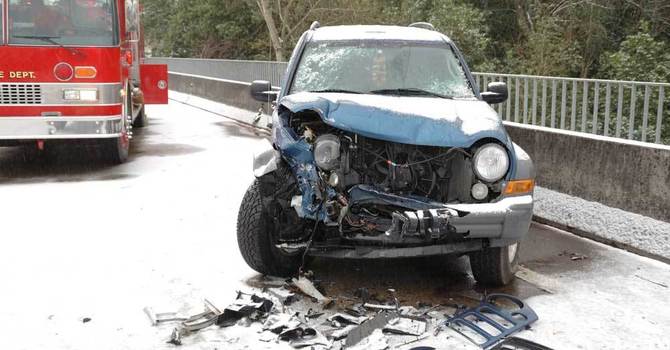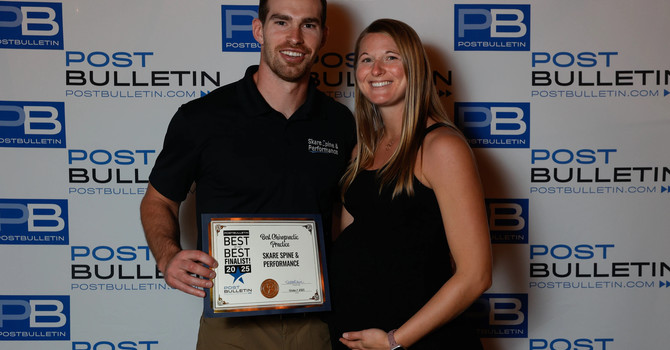
Finding Sciatic Nerve Pain Relief in Rochester, MN
Sciatica and sciatic nerve pain are extremely common and can be frustrating and nagging. At Skare Spine & Performance, we specialize in finding the root cause of sciatica and using a comprehensive treatment plan to help relieve sciatica now and in the future.
Key Takeaways:
-
There are several causes of sciatica, including disc bulge or herniation, spinal stenosis, and piriformis syndrome.
-
Each cause of sciatica requires a different treatment. Our thorough history and exam at Skare Spine & Performance will help determine the cause and most effective treatment.
-
At Skare Spine & Performance, we offer a range of treatment methods to alleviate sciatic nerve pain, including chiropractic adjustments, dry needling, soft tissue or myofascial release, and functional rehabilitation.
You don't have to live with sciatic nerve pain.
If you, or someone you know, is struggling with sciatica - you don't have to suffer through the pain. We can help! Call our office at 507-200-0449 or schedule an appointment online.
Disclaimer: This is a direct transcript of the video audio and may not be grammatically correct.
Finding Sciatic Nerve Pain Relief in Rochester, MN
If you're experiencing pain that travels into your hip, down to the back of your thigh or all the way to your foot, you're likely experiencing sciatica. I'm Dr. Nate Skare of Skare Spine Performance, sciatica is something that affects a lot of people, and it's something that we commonly treat.
Sciatica typically refers to pain that travels along the sciatic nerve. The sciatic nerve exits your spine, goes down the back of your glutes and hip, down your thigh, and all the way to your feet. The pain can range from very mild to excruciating, and some people also experience burning, tingling, or numbness sensations.
Several different conditions can cause sciatica, and three of the common ones are herniated discs, spinal stenosis, or piriformis syndrome.
Causes of Sciatica
A herniated disc is when the disc between our vertebrae either bulges or herniates out and puts pressure on the sciatic nerve. Spinal stenosis is a narrowing of the spinal canal, or where the nerves exit the spine. It's typically due to arthritis or degeneration, but this also puts pressure on the sciatic nerve.
Piriformis syndrome is a muscle in the glutes, and when it gets tight, it can actually entrap the sciatic nerve. All of these will present slightly differently, so it's really important for us to figure out the exact cause of your sciatica in order to give you the most effective treatment.
Chiropractic Care for Sciatica
At Skare Spine & Performance, we take a comprehensive approach to treating sciatica, always starting with a thorough history.
The history actually tells us a lot about what's going on and what may be causing your symptoms.
So, for example, if it bothers you to sit or bend rather than stand or walk for long periods, usually, those are two different diagnoses, and they will actually help direct our treatment.
And then, from there, we always do a thorough examination. Typically with sciatica, we start with a McKenzie assessment.
So with the McKenzie method, we actually take your spine through repetitive motions, and we see if we can change or centralize your symptoms. By centralize, we want to see if we can move the symptoms out of your leg and closer to your spine. And if we can do that, one, that's actually a really good prognosis for your case, but then it also serves as diagnostic criteria and can actually tell us what may be causing your symptoms.And then from there, the McKenzie method is cool in that the exercises are very simple, so you can do them at home to really help speed up your care.
We also incorporate chiropractic adjustments, which help improve spinal and joint mobility and start to improve the function of our spine.
We also usually incorporate soft tissue techniques to help address the tightness and inflammation that often accompany sciatica. Whether that's muscle release techniques, fascial manipulation, or dry needling, these can help improve blood flow and reduce the tightness, inflammation, and irritation that often accompany it.
Functional rehabilitation is often a crucial piece of our treatment plans. It addresses why your sciatica occurred in the first place and can help prevent future instances of it.
In our functional rehabilitation plan, we often incorporate Dynamic Neuromuscular Stabilization, which is great for helping restore natural movement patterns. It's focused on creating core stability and activating the right muscles to help stabilize your spine.
The last piece of our treatment plan is typically education. Whether that's diet, lifestyle, advice, or work ergonomics, we'll help you avoid things that irritate your sciatica and help you heal as quickly as possible.
At Skare Spine Performance, our mission is to provide holistic, patient-centered care that addresses the root cause of your pain. We work closely with you to develop a comprehensive treatment plan that not only gets you out of pain but also helps prevent future occurrences of this pain. So, if you're dealing with sciatica, don't wait any longer. We can help you get moving and feeling your best.
For more information about your sciatica, contact us, or to schedule an appointment to see how we can help.

Nate Skare
Contact Me



